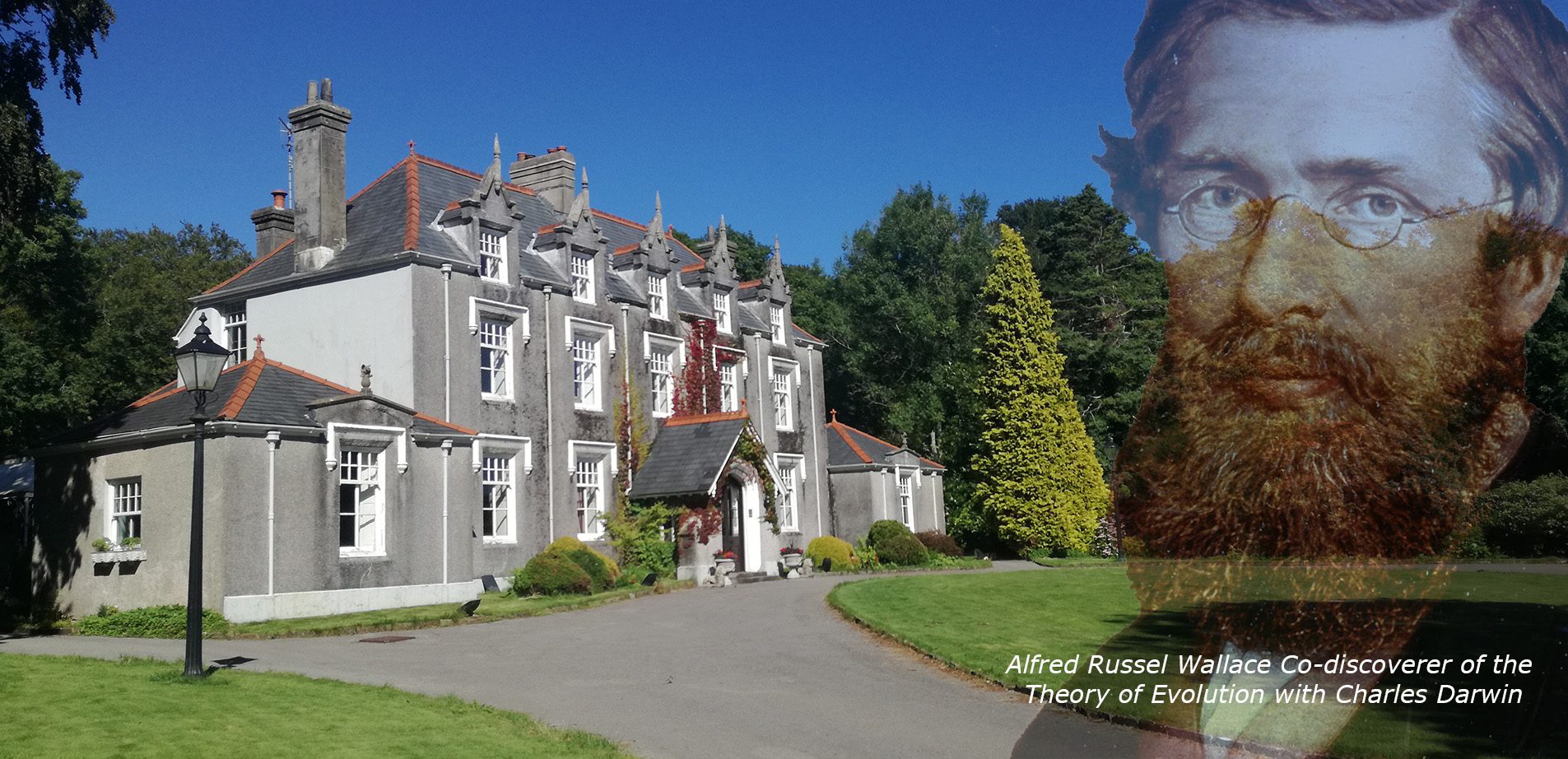The countryside surrounding Plas Cilybebyll is renowned for its natural beauty and the role it played in the history of the theory of evolution, introducing Alfred Russel Wallace to, “the variety, the beauty and the mystery of nature.” Extensive private grounds feature an uncommonly diverse range of habitats which make for wonderful and varied wildlife spotting opportunities.
The Woodland

There are woodland walks from the doorstep, the woodland floors are carpeted with bluebells with early foxgloves hiding in the shade. Rhododendrons of varying hues – red, pink, white and mauve are in all their glory as are the hawthorn bushes and apple blossom. Rhododendrons were planted widely by the landed gentry in the nineteenth century, imported from some distant part of the empire and a reflection of the economic power they wielded during this period. Plas Cilybebyll was no exception and many spectacular varieties may be spotted around house. The local legend is that cuttings were taken from the Plas Cilybebyll estate to stock Clyne Gardens in Blackpill, Swansea, which now boasts an internationally recognised collection of rhododendrons.

The surrounding woodland is a great place to spot birds – woodpeckers, nuthatches, treecreepers and jays are frequently seen in the trees around the house and even tawny owls from time to time whose calls are often heard at night. A highlight for many is watching buzzards and red kites soar on thermals over the manor house as they scan the surrounding countryside for their next meal. The sunsets over the sheep grazed parkland to the west are often spectacular and the cue for another wonderful spectacle – the dusk emergence of bats from their roost high in the eaves as they leave one by one to forage in the wooded river valley. As darkness falls on cloudless nights, the rural setting allows the milky way to be seen arching over the manor house making the front lawn perfect for stargazers and romantics.
The Mountain
To the east of the Manor House, the great sides of Mynydd Marchywel sweep up, brown and grey, to a height of nearly 1,400 feet. The views from the top are breathtaking and the nature endlessly captivating – buzzards and kites soaring over the landscape, the tchacking of stonechats, the song of the skylark, the unmistakable call of the cuckoo. Swansea Bay and is seen to the south, Brecon Beacons National Park to the north.

Many hours can be spent exploring the landscape, as did Alfred Russell Wallace over a century ago. His long walks in the mountains around Neath were responsible for an interest in botany that led to his independent discovery of evolution through natural selection; his paper on the subject being jointly published with Charles Darwin’s work in 1858. Treasures abound. There are winberries and blackberries to forage. There are fossils to discover- the coal measures that brought such fantastic wealth outcrop on the hillside and offer fossils that lie in wait on the mountain paths. At the very top of the mountain is a prehistoric stone circle and the views from its slopes are something to behold, perhaps summed up best by Christopher Tennant in his autobiography…
‘There are view-points from which one looks down on to the Vale of Neath stretched out below for almost its entire length, and on the still wilder Dulais valley hemmed in by the Breconshire hills, snow-capped on winter days. Standing with his Mother once on such a point, when he was about thirteen years old, she suggested that they should give the place a name, as they came there so often. “It is too beautiful to have a name,” he answered —” let us call it The Nameless Spot, like the tomb of Moses “—and as The Nameless Spot it was ever after known in the family circle’.

The River
The River Clydach, which runs through the grounds of Plas Cilybebyll Manor House, begins high on the flanks of Mynydd Marchywel. Its crystal clear waters descend into the oak woodland of the home farm before passing through the gardens near the Manor house, over the weir, past the courtyard cottages, through the farmyard and onwards towards the sea at Swansea Bay. It is the river in which Alfred Russel Wallace taught himself to swim as a young boy.

The river is is rich in wildlife and a joy to explore – grey wagtails hopping from stone to stone, dragonflies patrolling their patch, wild trout leaping from sun dappled pools and the crystal clear waters make it perfect for spotting frogs and toads. If you are lucky, you may also see an otter.

“a panorama which excelled every other spot, since all the features, which constitute beautiful landscape are here concentrated – mountain and dale, wood and water, rock and lawn.”
Richard Warner describing a local vista which included Mynydd Marchywel in his book Second Walk Through Wales, published in 1800.
The Parkland
Plas Cilybebyll Manor House overlooks acres of sheep grazed parkland, dotted with ornamental and indigenous trees. There are many to spot – horse chestnut, copper beech, Scots pine, a London plane. The myriad varieties make the changing of the seasons particularly beautiful.
There are many seasonal highlights to enjoy at Plas Cilybebyll – the daffodils in springtime, lambs playing in the surrounding fields, swallows nesting in the farmyard buildings, the call of the chiffchaff signaling the return of summer migrants, chasing aristocratic butterflies on sunny summer days, spotting newts in the garden ponds, the spectacular show of autumn colours, collecting conkers and foraging for hazelnuts…everyone leaves with new experiences and a feeling of having lived close to nature.

Plas Cilybebyll Manor House
Mountain | River | Woods | Parkland
“Overwhelmingly beautiful”
